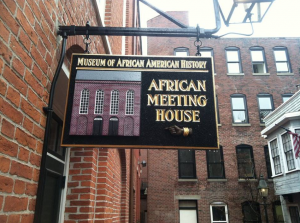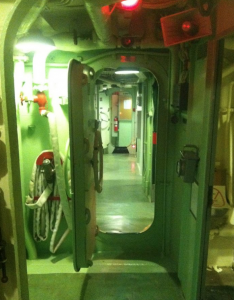Written by Ruaidhri Crofton, History & Museum Studies M.A. 2020
It is no secret that Boston is home to a wide array of museums and historic sites that play an important role in both entertaining and educating hundreds of visitors annually, while simultaneously preserving some of the most important aspects of local history and culture. Some, like the Museum of Fine Arts, the Old North Church, and the USS Constitution, are so iconic that you can hardly say you have been to Boston without visiting them. However, the greater Boston area is also home to a number of “underrated” museums that play just as important a role in the communities they serve, despite their relative lack of widespread fame.
As someone who is (perhaps overly) enthusiastic about museums and the stories they tell, I am always looking for new places to visit and have thus had the opportunity to explore many of these often-overlooked sites. Not only have they proven to be incredibly informative and engaging, I have often found many of them to be even more impressive than some of their larger counterparts. Though difficult, I have picked out a few of my favorites to highlight just how varied and impressive some of these “underrated” museums can be. I hope that they will help to provide some inspiration for your own future adventures around Tufts and prove to be just as enjoyable for you as they were for me!
Situated just across the street from the popular Harvard Museum of Natural History and the Peabody Museum of Archaeology and Ethnology, the Harvard Semitic Museum’s collection contains more than 40,000 objects from the Near East, including Egypt, Iraq, Israel, Jordan, Syria, and Tunisia. Visitors can view Egyptian canopic jars, mummies, Mesopotamian art, reconstructions of ancient Israeli homes, and much more for free!
Located within the Christian Science Center in the Back Bay, the Mary Baker Eddy Library is a research library, museum, and repository for the papers of the founder of The Church of Christ, Scientist. However, perhaps the most iconic exhibit housed within the museum is the stunning “Mapparium,” a three-story stained glass globe. Visitors can walk through the center of the globe on a 30-foot long bridge and view the world as it appeared in 1935.
Paul S. Russell, MD Museum of Medical History and Innovation
Want to learn more about the history of medicine in the United States? What better place to do it than at the Russell Museum located on the Boston campus of Massachusetts General Hospital (MGH)! In addition to viewing historic surgical instruments and engaging with interactive displays, make sure to check out the Ether Dome located within the hospital itself where the first successful public surgery using ether as an anesthetic was performed.
Museum of African American History & The Black Heritage Trail
Nearly everyone who visits Boston spends at least part of their visit walking the Freedom Trail. But did you know there’s a second historic walking trail downtown focusing on a different aspect of the “fight for freedom” in the United States? Boston’s Black Heritage Trail takes visitors through the streets of Beacon Hill to view the homes of prominent abolitionists, stops on the Underground Railway, and more. At the end of the trail is the African Meeting House, the oldest black church in the United States, and the Museum of African American History featuring rotating exhibits on the African American community in Boston.
Home to the third-largest Armenian population in the United States, the Boston suburb of Watertown is also home to perhaps one of my favorite museums, the Armenian Museum of America. Featuring exhibits on the rich history and culture of Armenia and Armenian-Americans, visitors can learn about everything from ancient metalwork and textiles to the 1916 Armenian genocide. The museum is also actively engaged in programming for the community by featuring regular concerts, art programs, and lectures.
Berthed in the shadow of the famous USS Constitution, the oldest actively commissioned naval vessel in the world, the USS Cassin Young (DD-793) is a unique museum tasked with preserving a different era of United States naval history. Named for Captain Cassin Young, a Medal of Honor recipient for his actions during the Japanese attack on Pearl Harbor, the USS Cassin Young was commissioned in 1943 and served in both World War II and the Korean War before it was decommissioned in 1960. Today, the museum is run by the National Park Service and allows visitors to catch a glimpse of life onboard a more modern naval vessel.
Originally a synagogue built in 1919 by Jewish immigrants from Lithuania who settled on Beacon Hill, the Vilna Shul has been an important center for Jewish culture for nearly a century. Today, it is the oldest Jewish building in Boston and continues to serve in its role as a cultural and community center, in addition to being a museum featuring exhibits focused on the history of the Jewish community in Boston and a historic building itself.



